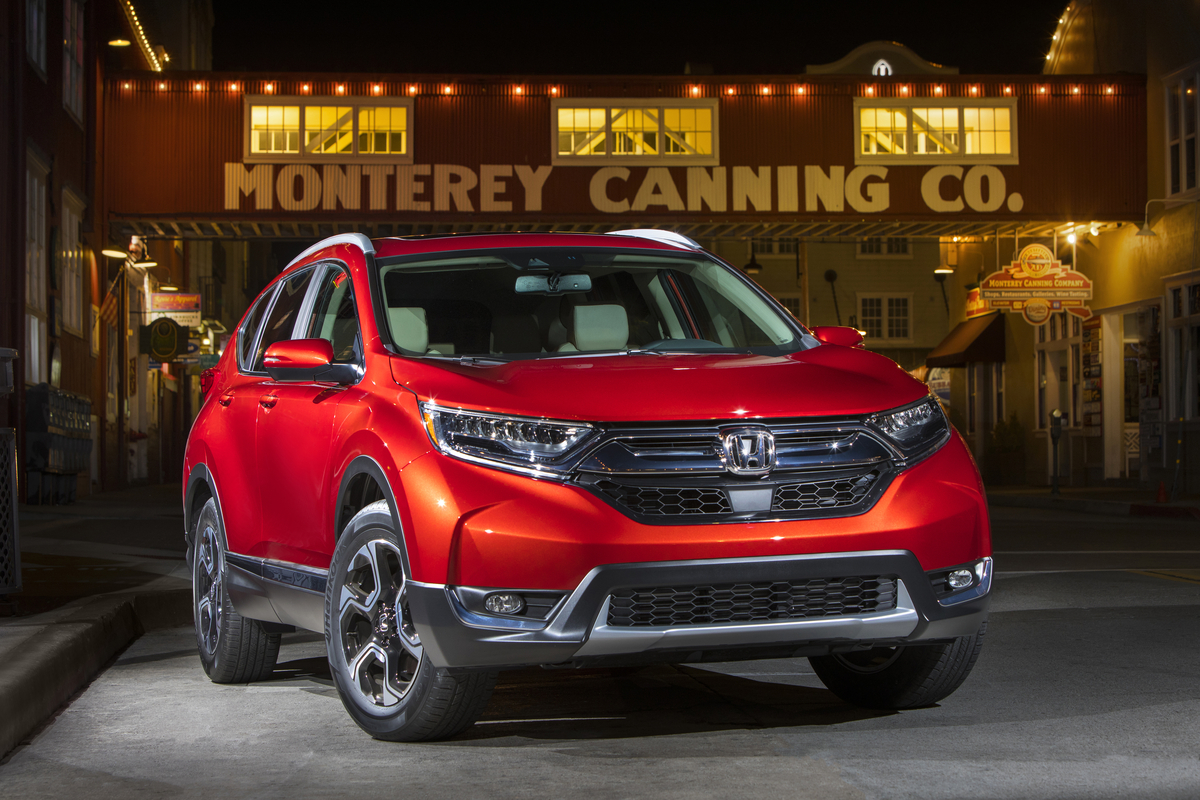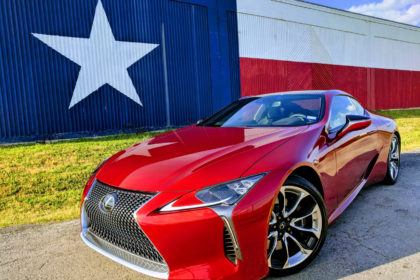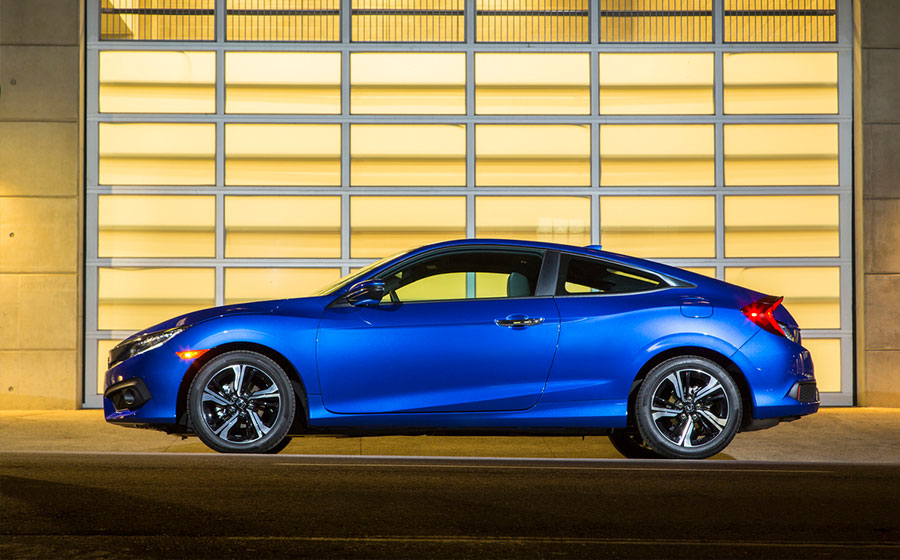There’s something to be said for a vehicle that has progressed through five generations and is still going strong. The Honda CR-V first debut in 1995 and in 2017 the Japanese automaker introduced the 5th generation of their popular crossover which should speak to two very important points: 1) Honda is not complacent. Five updates in the span of approximately 20 years says that the Japanese automaker has consistently developed ways to improve the CR-V and worked quickly to implement those changes. 2) Consumer demand and interest in the CR-V has sustained and flourished in an automotive culture that has seen an explosion of similar crossovers flood the market. Because of its reliability, the CR-V has withstood the test of time.
Reliability, however, is one piece of the puzzle. Many other factors that build towards an overall picture of a successful crossover are also in play. Things like performance, cargo space, luxury, design, and functionality are all considerations for the modern crossover consumer. Seeing as how Honda refreshed the CR-V for 2017, it stands to reason that all these factors were also renewed through innovation. After all, the CR-V was already successful so all it had to do was improve, on those successes, right? However, what does improving an experience that is already beloved look like?
Modern But Flawed
The 2017 Honda CR-V is handsome, there is no doubt about it. It looks exactly like what a Honda compact crossover should look like, which is what I’m sure the Honda marketing department was hoping for. Whether this aesthetic branding is a good thing or a bad thing has all to do with the eye of the person doing the beholding. Honda enthusiasts will surely love the look while non-Honda fans might find the exterior design cold and visually clunky.
There are definite improvements in aesthetic designs over the 2016 model: the front bumper juts out now like a puffed out lower lip. At certain angles, it looks awkward but overall, it complements the subdued grill much better than last year’s look. The bumper widens out and upward now, bulging out to the front fenders in odd but distinctive fashion. New sculpted lines throughout the front end help produce a very mechanical façade that at first glance looks like a jumble but makes more sense the longer you look at it.
The roofline curves towards the rear in a much more pleasurable angle leading the eye to the vast improvements applied to the backside of the CR-V. Rightly so, Honda kept the tall, pillar style taillights from the previous generation but molded them into much more interesting shapes that mirror the mechanical nature of the front bumper. The taillights are now thinner as they run down from the roofline and suddenly jut outward and across the rear cargo door. From there the body of the CR-V bulges outward to provide a low heavy stance. Attractive lines sculpted into the bumper lead nicely into the cargo door handles. Again, it may take some time but stepping back to admire the design from afar proves that the CR-V has indeed innovated in some very interesting ways.
- 2017 Honda CR-V
- 2017 Honda CR-V
Inside Out, Inside New, Inside Traditional
If things get too weird for you while viewing the CR-V from outside, open the door, climb in, and you’ll return to conventional Honda designs that have undergone some drastically improved design elements over the 2016 model. There are more angular lines throughout the cabin that are very much in step with the exterior design but inside, they work wonders to modernize things. The CR-V I spent time with came in the Touring trim, Honda’s most feature-packed offering, so the bells and whistles that were included only boasted the overall appearance of the interior. Leather-trimmed seats, steering wheel, and shifter knob all felt sophisticated to the touch; the seats, in particular, felt uber comfortable. Even the faux wood trim strategically placed across the dash and front doors gave a very cool luxurious touch to the black interior.
The dash itself was redesigned with elements rearranged to create a much more modern and attractive configuration. The layout is much cleaner and the 7-inch touchscreen is mounted much more elegantly in the center. Honda’s screens always irritated me as a magnet for fingerprints and smudges but this year they’re applied a new coating designed to repel such nuances. It certainly helps but the Honda’s touchscreen still feels a little too sensitive to touch and the user interface is not intuitive. The screen in the gauges behind the steering wheel is, however, a nice addition and elegant. Designs elements in this gauge cluster are clean and structured in-line with the overall aesthetics of the CR-V. I’m also glad Honda left the shifter mounted low on the dash – reminds me of one of my favorite Honda vehicles from years past: the Element.
The wheelbase of the 2017 CR-V – the actual frame that connects the axels – is almost an inch and a half longer now which translates to a tad more room cargo inside. Five full adult passengers can easily fit, with plenty of leg room for driver and passenger. In fact, Honda says there are an extra 2 inches of space for rear passengers but don’t expect any more than what a vehicle this size can offer. The cargo area, on the other hand, is quite spacious and feels particularly deep. The bloating out of the rear side body makes much more sense once you take into consideration the added space. Laying the second row of seats down flat doubles the fun; a generous 75.9 cubic feet of cargo space to be exact.
- 2017 Honda CR-V
- 2017 Honda CR-V
- 2017 Honda CR-V
The Competitive Bandwagon
While the new styling of the CR-V can be described as bold, it doesn’t exactly offer visual clues as to how the SUV will handle once the tires hit the pavement. Honda has a well-deserved reputation for producing capable engines and pairing them with durable vehicles to create a confident experience for most drivers. However, the automotive performance landscape is changing and it’s telling that this year Honda jumped on the “turbocharged” bandwagon by creating an engine that rivals similar configurations in competitions vehicles. Thankfully the Touring model I test drove came included with this exciting new block.
This 1.5-liter turbocharged inline-4 engine is paired with a Continuously Variable Transmission and produces 190 horsepower with 170 lb-ft of torque. Customers can opt for an All Wheel Drive CR-V and again I lucked out – my test vehicle was indeed AWD. With a newly turbocharged engine all-wheel drive matters because, as Honda is quick to point out, torque can shift to the rear of the vehicle when needed. This means the overall drive feels much more controlled and calculated. Acceleration is steady, even when on an incline or loaded down with passengers and cargo.
On the road, the 2017 CR-V is nimble and light without the slight roll that sometimes accompanies crossovers of this size. Steering has been finely tuned to accommodate the new stiffer structure and while the CR-V feels firmly planted to the pavement, there’s a slight loss in responsiveness that we’ve come to enjoy from Honda. Most drivers will likely not notice or care but the CR-V handles more like a vehicle that is best experienced on paved, predictable roads. While this might leave something to be desired for drivers seeking a more thrilling drive, the average CR-V customer should be pleased with their experience behind the wheel. Besides, the transmission does a very acceptable job of regulating power so that the short burst of acceleration urban drivers seek during rush hour traffic is every ready.
To its credit, the 2017 CR-V stays within its fuel economy estimation: 27 mpg in the city and 33 mpg on the highway. These are encouraging numbers for a crossover with a turbocharged engine. Honda does offer a slightly tamer engine configuration for the base LX model of the CR-V: a 2.4-liter inline-4 cylinder engine that produces 184 horsepower and 180 lb-ft of torque. Nothing wrong with this adequate engine but it’s difficult to argue against the turbocharged engine. Besides, all the trims above the base LX come with Honda’s safety technology like lane departure warning, blind spot monitors and a lane keep assist that nudges the vehicle back into the center of a lane if it starts to drift. Honda’s safety technology is some of the best in the industry and once drivers experience it for themselves, they understand why it’s worth the extra cost.
Traditionally Subdued
New crossover vehicles flood the market with new features and improvements every year, but the CR-V stands its ground with a fearlessness that only Honda could muster. The 2017 CR-V is both traditional and radical at the same time but subdued all together which can be the perfect storm for an industry that moves quickly. How so? With this CR-V it appears that Honda has learned to embrace a new kind of customer while simultaneously catering to a fan base that swears by the brand. Make no mistake though, under its unconventional exterior lies a driving experience that maintains the status quo. Or at least the status quo according to Honda. Will that be enough for consumers who are increasingly seeking more thrills from their “family-centric” vehicle? Maybe not but I have a feeling Honda will continue to do well if not for the simple fact that the 2017 CR-V is a step in an exciting direction.
The 2017 Honda CR-V starts at $24,045. I tested the AWD Touring model valued at $33,695.














